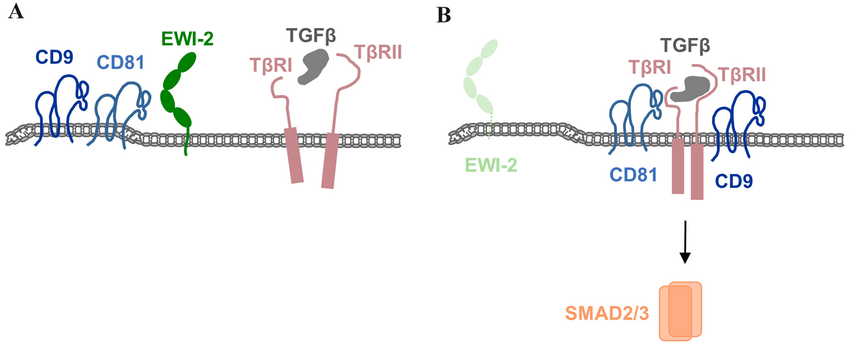Blog Post
Exploring CD9: Its Role and Significance in Cellular Functions
CD9, also known as Cluster of Differentiation 9, is a member of the tetraspanin family of proteins. This family is characterized by their role in cell signaling, adhesion, and motility. CD9 is found on the surface of various cell types and is involved in a range of cellular processes, making it an important molecule in both health and disease. In this blog post, we will explore the structure, functions, and clinical significance of CD9.
What is CD9?
CD9 is a glycoprotein that spans the cell membrane four times, creating extracellular and intracellular loops. These loops are critical for its interaction with other proteins and lipids, which helps mediate its various functions. CD9 is widely expressed in many tissues, including immune cells, endothelial cells, and epithelial cells.
Functions of CD9
- Cell Adhesion and Migration: CD9 plays a crucial role in cell adhesion, the process by which cells interact and attach to neighboring cells or the extracellular matrix. This is important for maintaining tissue structure and facilitating cell migration during processes like wound healing and immune responses.
- Signal Transduction: CD9 is involved in signal transduction pathways that regulate cell proliferation, differentiation, and survival. By interacting with other cell surface proteins, CD9 helps transmit signals from the extracellular environment to the cell’s interior, influencing various cellular activities.
- Membrane Organization: CD9 contributes to the organization of membrane microdomains known as tetraspanin-enriched microdomains (TEMs). These microdomains are platforms for protein-protein interactions that are essential for cellular signaling and membrane dynamics.
- Role in Immune Function: CD9 is expressed on immune cells such as B cells, T cells, and macrophages. It plays a role in immune cell activation, antigen presentation, and the regulation of immune responses.
CD9 in Health and Disease
- Cancer: CD9 expression is often altered in various cancers. In some cases, high levels of CD9 are associated with reduced tumor invasiveness and better prognosis, while in others, it may promote tumor growth and metastasis. This dual role makes CD9 a complex but important target for cancer research and potential therapies.
- Infectious Diseases: CD9 is involved in the immune response to infections. It has been shown to influence the ability of immune cells to recognize and respond to pathogens. Additionally, some viruses exploit CD9 to enter and infect host cells, highlighting its role in viral infections.
- Cardiovascular Diseases: CD9 is expressed on endothelial cells lining blood vessels and plays a role in angiogenesis, the formation of new blood vessels. Abnormal CD9 expression or function can contribute to cardiovascular diseases by affecting blood vessel formation and stability.
- Reproductive Health: CD9 is involved in sperm-egg fusion during fertilization. It is present on the surface of both sperm and egg cells, facilitating their interaction and fusion. Defects in CD9 can lead to infertility issues.
Clinical Implications
Given its involvement in various cellular processes and diseases, CD9 is a potential target for therapeutic interventions. For example, targeting CD9 in cancer could help modulate tumor growth and metastasis. In infectious diseases, manipulating CD9 function could enhance immune responses or prevent viral entry. Additionally, CD9-based therapies could be developed to promote tissue repair and regeneration.
Conclusion
CD9 is a versatile protein that plays critical roles in cell adhesion, signaling, and membrane organization. Its involvement in health and disease underscores its importance in cellular function and clinical research. Understanding the mechanisms by which CD9 influences these processes could lead to novel therapeutic strategies for a range of conditions.


